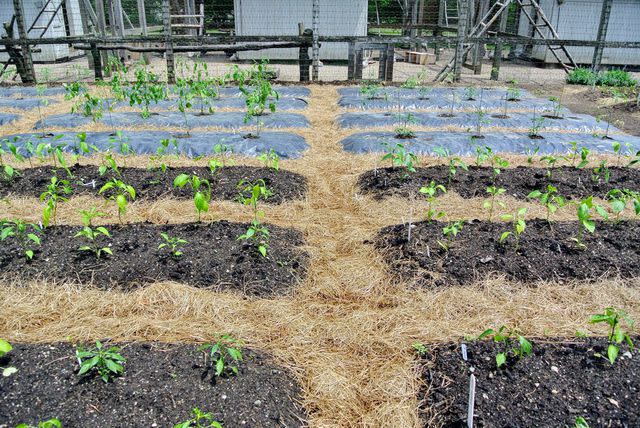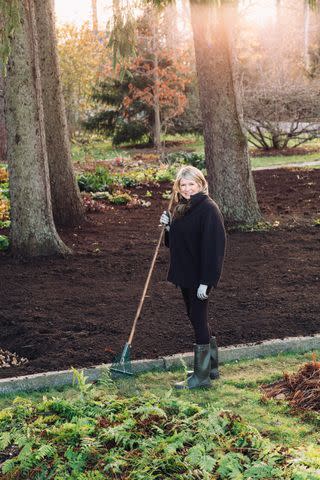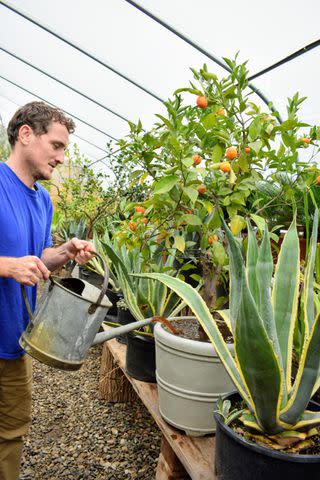10 Composting Tips That Will Keep Your Soil Healthy, According to Martha’s Head Gardener
Compost adds nutrients to your soil and improves the productivity of your garden.
:max_bytes(150000):strip_icc():format(jpeg)/ms-ryan-mccallister-composting-tips-e3f8a4131c9d4c60939f8ee5a39758c9.jpeg)
The Martha Blog
Martha's head gardener, Ryan McCallister, carrying compost tea in her greenhouse.Martha and I are very passionate about compost. It’s the all-natural way to add nutrients to your soil and helps to improve soil structure, aeration, and water holding capacity. Compost offers a way to reuse yard and food scraps, returning them to the soil and allowing their nutrients to become available for the next generations of the garden. It is also loaded with many organisms, including worms, insects, bacteria, and fungi, creating a community of individuals that all play important roles in the health, vitality, and productivity of the garden.
On the farm, we make our own compost and primarily use it to top dress all of the garden beds in late winter and early spring while the gardens are still asleep. This gives all of the beds a clean, neat, and finished appearance. But more importantly, it supplies an immediately accessible organic supply of food and nutrients to the plants and beds, helping them get off to a great growing season. We also incorporate a heavy layer of compost in the vegetable garden. Since vegetables are fast growers and heavy feeders, compost helps to replenish spent soil in their beds.
To help you make and use compost in your own garden, here are some composting tips to keep in mind throughout the process.

The Martha Blog
Related: A Beginner's Guide to Composting—Plus, How to DIY a Compost Bin
Know the Key Components of Good Compost
Good compost is a mixture of multiple materials and should have a healthy ratio of greens and browns. Kitchen scraps, yard waste, manure, and wood chips are all materials that come together, along with many microorganisms, to create compost. Organic matter is the primary component, as one of the major reasons to compost is to give plants a natural food source.
You also want compost to have texture—although decomposed, you should still be able to see and recognize some of the materials in your compost. Holding capacity is also important—you want the compost to allow for aeration and drainage, while still being able to allow for moisture retention and air pockets, both of which not only help plant growth but are requirements.
Maintain the Right Ratio of Greens and Browns
Browns and greens both supply nutrients to compost. But what they are composed of (browns are carbon rich, greens are nitrogen rich) affects the pile as a whole. Too many greens and the pile gets too hot. Too many browns and the pile doesn’t get hot enough. More problems occur on the green end, which is where smell, heat, and oxygen depletion happens.
There are many different ratios that people use, though the most common is 4 parts browns to 1 part greens. It is always more important to have a much higher level of yard scraps (leaves, plant debris, etc.) than you do of manure and other high-nitrogen components.
"Remember, a compost pile isn’t a trash-type pile for garbage—it’s a mix of ingredients coming together to make something better."
Ryan McCallister
Choose the Location of Your Compost Pile Wisely
The location of your compost pile is very important and shouldn't be treated as an afterthought. It should be kept in a location with good airflow and somewhere it will be somewhat exposed to the elements, as you need the warmth and light of the sun to help with decomposition.
Most importantly, place your compost pile somewhere it is easily accessible. If it’s too out of the way, it's likely you won't regularly turn the pile or add food scraps and fresh materials to it. You also don’t want the pile to be too far from the garden, so you can easily use it once it’s ready.
Maintain the Appropriate Temperature
Maintaining the temperature of your compost pile is key, since it is a living system. The ideal temperature a compost pile needs to hit is 140 degrees Fahrenheit, and it needs to stay at or above that level for a while. This will ensure that weed seeds and many plant diseases are killed. Too cold a pile and there will be sluggish or no biological activity and weed seeds will survive. Too hot a pile and all the life in it will die, defeating the purpose of making compost in the first place.

John Dolan
Turn the Compost Pile Regularly
Compost should be turned about once a week. You do this for a few reasons: the pile will heat up most on the inside and turning it brings the inside out and the outside in. This ensures all parts of the pile heat up enough to kill the bad (weeds, disease) and keep the good (bacteria and microorganisms) alive and active. Turning your compost pile also allows air and water penetration to reach the whole pile and allows for even mixing and distribution of the various ‘ingredients’ the pile is made of.
Ensure the Compost Pile Is Properly Ventilated
Proper ventilation is important primarily because your compost pile is alive and needs oxygen in order to facilitate decomposition. Ventilation allows for increased oxygen availability. The easiest way to ensure this is to have your pile out in the open, where it is naturally ventilated. If your pile is in some sort of container or box, then either slats (if the containment is wood) or some type of chicken wire or mesh is appropriate to give the pile access to air throughout.
Constantly Add to Your Pile
You should add to your compost pile whenever possible—every time you clean your yard, mow your grass, rake up leaves, etc. If you’re doing yard work, which most gardeners do every week when possible, you should be adding to your pile. And don’t forget kitchen scraps. Depending on your diet, and if you cook at home, you should have kitchen scraps to add pretty much every day (or collect them daily and add them all at once at the end of the week if that’s easier).
Cover Your Pile
Covering a pile is optional and can be done on a case-by-case basis, but it may be beneficial at times. Covering your compost helps to keep out rodents and animals. It also helps in times of heavy rain or snow to prevent over-saturation of the pile, as well as in very windy areas or very dry regions.
Make Compost Tea

The Martha Blog
Use homemade compost to make compost tea, which is a wonderful way to provide organic nourishment to plants. Compost tea is made by steeping aged compost (which we make right on the farm) in water. Every few weeks, I mix up a batch using a 10-gallon compost tea system and feed it to the plants in Martha's greenhouses. You can pour the tea around the roots or spray it onto the leaves of your plants. Doing so improves soil structure, reduces water stress, increases plant growth, and is a great alternative to chemical pesticides and fertilizers.
Don’t Add Ingredients That Aren’t Compostable
Don’t add anything to your compost pile that is non-compostable (such as plastics) since it won't really break down and contribute to the health of the pile. You also don’t want to add animal products (meats, etc.) or greasy items when you are disposing of kitchen waste—they don’t add to the pile's health and are the types of things that will attract rodents. Remember, a compost pile isn’t a trash-type pile for garbage—it’s a mix of ingredients coming together to make something better.
Read the original article on Martha Stewart.

